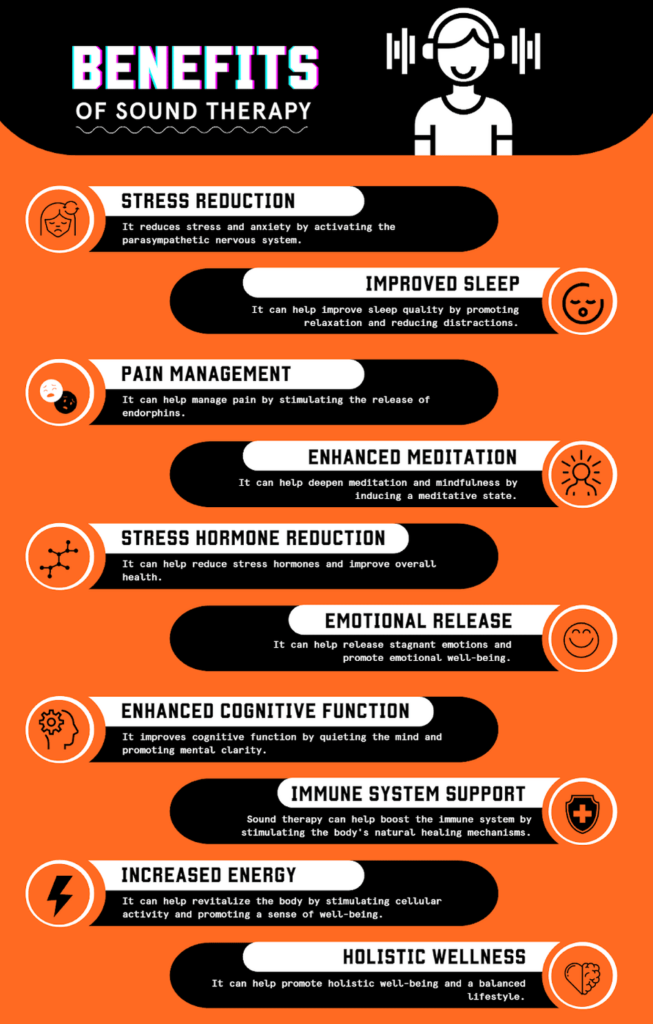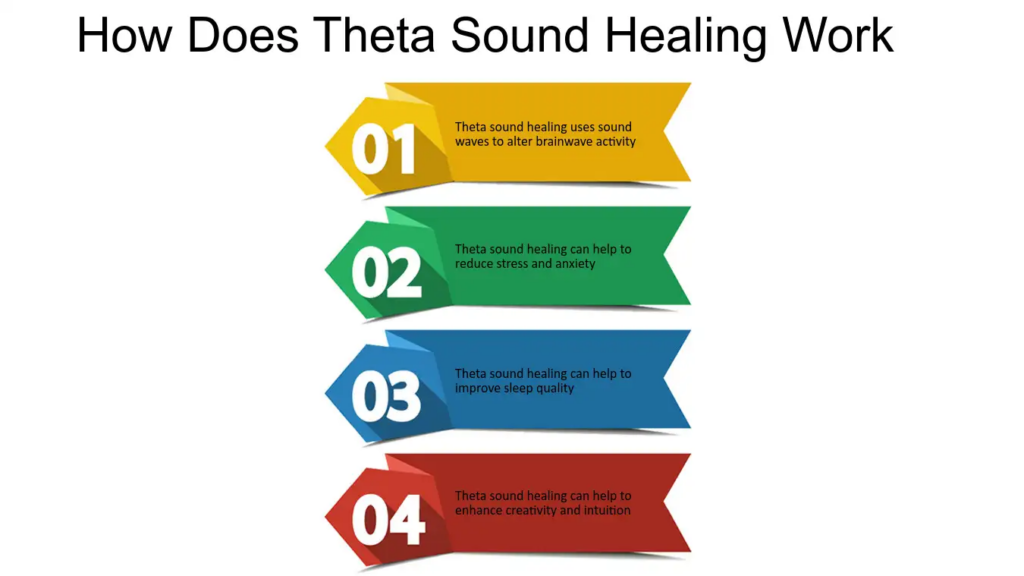
Sound healing is regaining popularity in contemporary societies, as it offers a unique physical and emotional well-being approach. By utilizing different forms of sound frequencies and vibrations, practitioners intend to reduce stress levels, emotions balancing, and address physical conditions. Nonetheless, it is important to recognize that sound therapy might not be appropriate for everyone.
What is Sound Healing?
Sound healing uses sound frequencies and vibrations, often from instruments or voices, to promote relaxation, balance energy, and support physical and emotional well-being.
The concept behind sound healing is based on the belief that certain sounds and vibrations have positive effects on our bodies as well as minds. This technique has been employed by various communities all over the world for centuries.
According to scientific studies on this subject, it appears that specific frequencies do have a bearing on our brainwaves thus potentially giving rise to states of relaxation, concentration or sometimes altered consciousness. Sound healing is excellent for most people, but there are some groups that should be careful with it.
Which Medical Issues Should Be Aware of Sound Healing?
Be cautious with sound healing if you have sound sensitivity, epilepsy, severe mental health conditions, or heart issues; consult a healthcare provider for personalized advice.
Individuals who have epilepsy, seizures, or any other seizure disorder need to be cautious about using sound healing. This is because certain sounds and rhythms may cause them to have episodes of convulsions. You have to first consult your neurologist.
Some sound healing methods employ electrical devices that produce particular frequencies. These tend to disrupt pacemaker function or interfere with the working of other implanted medical devices. Thus, if you have any electronic implants, avoid any sound healing techniques that use electrical equipment.
Gentle forms of sound therapy might be relaxing for some pregnant women, but people should exercise caution. Some vibrations can be too intense, and certain frequencies can be harmful to an unborn child.
For instance, people suffering from schizophrenia, bipolar disorder, severe anxiety, and similar serious mental health conditions may not benefit from the inclusion of sound healing.
What Are Sound Healing and Sensory Sensitivities?
Sound healing uses sound frequencies for therapeutic purposes, while sensory sensitivities involve heightened responses to stimuli; individuals with sensitivities may experience discomfort or overstimulation during sound healing.
People having hyperacusis or sensitivity to sound must approach sound healing with caution. Even sounds that are meant to be therapeutic may be overwhelming or painful for these individuals.
For those suffering from sensory processing disorders or those who are on the autism spectrum, there could be varied responses to sound healing. For some individuals, it can be soothing, whereas for others, it can become distressing. Take slow steps while closely assessing individual reactions.
How Does Cultural and Personal Beliefs Impact Sound Healing?
Cultural and personal beliefs influence sound healing’s effectiveness; acceptance and openness to the practice can enhance its benefits, while skepticism may limit its impact.

Certain people may have specific religious beliefs that contradict certain ways of sound healing. Chanting and using certain instruments, for example, might denote spiritual traditions other than one’s own.
Generally, for sound healing to function well, participants need to have an open attitude and be willing to accept it. If you have strong doubts about its effectiveness or feel disturbed by the idea, then you will not get all the benefits of this practice.
How To Determine Whether Sound Healing is Right for You?
To determine if sound healing is right for you, assess your openness to alternative therapies, try a session, and consult a healthcare provider for personalized advice.
Before trying sound healing, it’s better to consult with your healthcare provider, especially if you have any pre-existing health conditions. Talk about your interest in sound healing, any worries you may have and inquire about potential interactions with your current treatments.
If you opt for sound healing, you can begin by testing short light sessions. Pay attention to yourself during the experience and afterward. Good indicators might include feeling relieved, elated, or having less physical discomfort.

What causes blockages in sound healing?
Blockages in sound healing can be caused by unresolved emotional issues, mental resistance, physical discomfort, or energy imbalances, which hinder the effective flow of healing vibrations.
Mostly, blockages in the field of this healing are caused by trauma, and stress that remains unresolved and negative thoughts. These blockages can manifest energetically or physically and interfere with the body’s natural energy flow thus limiting how effective any particular session is.
Does sound healing really work?
Sound healing can be effective for relaxation and stress relief, though scientific evidence is limited; results vary based on individual response and openness to the practice.
Some people find that they benefit from these sessions, which may improve relaxation and reduce stress levels. Although scientific evidence is limited, many people say they feel happier and less anxious. The results will differ according to an individual’s belief level and openness to the treatment.
What to wear to sound healing?
Wear comfortable, loose clothing to sound healing sessions to ensure relaxation and ease of movement, avoiding restrictive or tight garments that could distract or hinder comfort.
When attending a session of sound therapy, dress casually in comfortable clothes. Cotton fabrics are a great choice to keep you fully relaxed throughout the process.
How does sound healing make you feel?
Sound healing can induce deep relaxation, reduce stress, enhance clarity, and evoke emotional release, often leaving you feeling calm, rejuvenated, or occasionally emotionally stirred.
Sound therapies often produce deep feelings of relaxation, tranquility, and mental clarity. Some could feel light and even euphoric. How individuals respond however depends upon both themselves and also what happens during each session.
Why do I feel dizzy after sound healing?
Feeling dizzy after sound healing may result from deep relaxation, energy shifts, or sensitivity to sound frequencies; staying hydrated and resting can help alleviate dizziness.
After sound therapy has been conducted a feeling of dizziness may arise from an energetic shift due to deep relaxation and emotional blocks being released. It can also come as a result of changes in blood circulation or breathing patterns after a sound healing session . These effects usually subsides fast.
What are the negative effects of sound healing?
Negative effects of sound healing may include temporary dizziness, emotional release that feels overwhelming, discomfort from prolonged sound exposure, or exacerbation of pre-existing conditions.Negative effects of sound healing are quite rare, though they may include momentary dizziness, headaches, or emotional discomfort. Some individuals may feel overwhelmed by strong feelings or energy shifts. Normally, these results are mild and temporary.
Final Thoughts
Sound healing is an effective way to enhance relaxation, emotional balance and overall well-being. Nevertheless, it’s not a one-size- fits-all solution. In order to make an informed choice about whether sound healing is suitable for you, consider all its potential contraindications and factor in your personal health needs.
Don’t forget that every route to recovery is unique. Whether you opt for sound healing or other treatment methods, always remember to be in touch with your body and never overstep your limits. Set proper limits by working together with healthcare providers towards achieving great health outcomes that support your general well-being.

